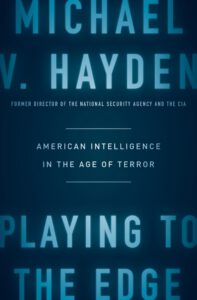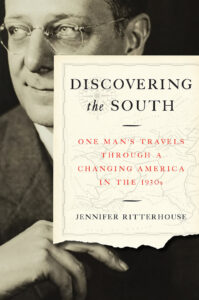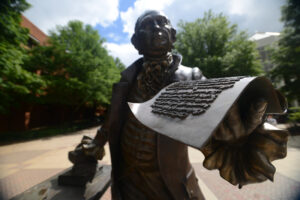 One of the questions I frequently field, professionally speaking, is: “You’re starting a new university press? I thought many presses are closing.”
One of the questions I frequently field, professionally speaking, is: “You’re starting a new university press? I thought many presses are closing.”
As with many, if not most, things these days, perception does not perfectly correlate with reality. Despite the fact scholarly publishing is undergoing a period of change, turmoil, and reinvention, relatively few presses are closing. Many academic institutions continue to see the value in supporting a press and most, if not all, presses do a fair job of breaking even, coming close to breakeven, or generating a modest surplus. Press closures, or attempted press closures, however, receive an exceptional amount of press coverage, social media activity, and activist response from scholars, publishers, and others involved in the scholarly ecosystem. The establishment of a new press, on the other hand, frequently goes unnoticed, for reasons that are understandable—it usually takes a while to make any kind of impact and gain attention.
Although precise numbers are hard to come by, two areas that have grown over the past decade in terms of new presses appear to be academic library publishing and scholarly publishers in developing countries. My institution, George Mason University, provides an example. The University Libraries had been involved in various publishing services for several years, including dissertations and thesis services, scholarly communications, open access journals, and an institutional repository. There had also been a separate effort to establish a university press in the mid-1980s, through a partnership with the University Press of America, formally an imprint of Rowman & Littlefield. Subsequently, an initiative was started in 2007, under the aegis of Mason’s College of Humanities and Social Science, which published a handful of regional titles. In 2014, the University Libraries established a formal publishing program incorporating both library publishing services, under the imprint of Mason Publishing, and the George Mason University Press, to support the creation, dissemination, and curation of scholarly, creative, and educational works.
Our approach to this new publishing venture is as a start-up. Even though we were not exactly starting from scratch, there was no “legacy” operation to be concerned with (nor, unfortunately, a vibrant backlist to fund publishing efforts). The framework of a start-up provides an opportunity to define (or redefine) the priorities, strategies, and tactics to pursue.
As in any start-up, several questions need to be addressed, including but not limited to the following:
- What is our organization’s (library and university) vision/mission?
- What are the interests, concerns, and expectations of our stakeholders (administration, staff, partners, funders, audience, etc.)?
- How important is the pursuit of revenue/profit versus social good?
- What opportunities exist for growth and innovation?
- How can we add value and what contribution(s) do we want to make to the world?
As the start-up organization takes shape, it’s crucial to consider what the ideal composition and characteristics of the staff should be. For example, diversity is important and it should not just be “token” diversity. A certain amount of “deviance” can be a good thing, but the right balance is critical. It’s not important that everyone always agrees, but some people disagree with everything as a matter of practice. In a previous organization, a staff member routinely commented on every new idea: “I’ve tried that before and it doesn’t work.” The squeaky wheel gets the grease, but this may be someone you don’t want to work with day after day. Within organizational ethics, positive conformity leads to innovation, experimentation, a change in organizational product or processes, such as continuous improvement and not accepting “what we’ve always done around here.”
More specific questions relevant to a publishing start-up include the following:
- What is the role and makeup of the advisory or editorial board?
- What is the role of or focus on open access versus commercial sales?
- What kind of books do we want to publish?
- What kind of books do we not want to publish?
- What other products will add value to our organization?
An important first step was to align our strategic priorities with those of George Mason University. This involved explicitly connecting our specific objectives and tactics with those of Mason’s 2014–2024 Strategic Plan, with the stated priorities and concerns of the University’s Provost, and with the University Libraries’ strategic plan. A few examples that have informed the objectives of our press include Mason’s strategic focus on innovative learning, access, and diversity; creating learning partnerships that emphasize innovation and collaboration; contributing to the cultural vitality of our community through regional partnerships; engaging students in research; supporting excellence in teaching and scholarship; focusing on multidisciplinary research; and elevating research of consequence.
Some of the ways these strategic goals translate into our publishing priorities include increasing the number of student and faculty led journals, particularly those focused on multidisciplinary research; providing increased training and editorial services to these journals; and leveraging our journals platform (Open Journals Systems) for conference proceedings and course use. For example, we approached Mason’s Center for Teaching and Faculty Excellence, proposing a partnership to publish abstracts, presentations, and papers for the annual Innovations in Teaching and Learning Conference, none of which had previously been archived. We are working with an English Composition professor to utilize OJS for peer review of student work in her course, an application that is generating interest among other faculty. We have also reached out to the larger scholarly community by helping to host and publish the papers of the Open Scholarship Initiative conference, a global collaborative effort between all major stakeholders in scholarly publishing to improve the future of how research information gets published, shared, and accessed.
We sought to increase partnerships for faculty collaboration and opportunities for publishing student research by partnering with the Provost Office and Mason Online, Mason’s Office of Digital Learning, to promote the development and publishing of open educational resources (OERs) on campus. Our pilot project is focused on innovative course redesign that reconsiders the materials currently used with the intent purpose to integrate digital materials, with the aim of reducing the cost of instruction for students, improving teaching and learning outcomes, and increasing economic opportunities through open access to quality educational resources. While not a revenue opportunity, this effort adds value to the university by publishing faculty workbooks, open textbooks, and other publications that can be used as OERs both at Mason and beyond.
And yes, we are looking forward to publishing a few scholarly books this fall that will make meaningful contributions to their fields (and, I hope, begin to build a backlist). Another important goal of our press, and we are certainly not alone in this, is to consider and start planning digital opportunities from the very genesis of a new project—not as an afterthought. Meanwhile, we need to continue to seek additional sources of funding for Press projects—subventions, grants, donors, crowdsourcing—and develop a revenue stream that sustains a growing Press publishing program.
Longer term, we plan to implement a rich media journals publishing platform (i.e., Vega, in development at the University of West Virginia) that will support digital research and publications that include multimedia, data, and interactive aspects. Digital humanities are an established strength at Mason, and we aspire to support publication of this innovative research in its diverse forms. This approach underscores the importance of partnerships with other departments in the libraries and centers in the university. These include the Roy Rosenzweig Center for History and New Media, innovative faculty in the English and Rhetoric department, faculty in game design, and others. Our staff is contributing to the development of a new digital scholarship center and a new scholarly production lab within the library.
Several principles help drive innovation and creativity, whether in a start-up or established organization. These include fostering an attitude of openness, of seeking diversity, of being open to criticism and not being afraid to make mistakes, looking for ideas everywhere, identifying hidden talents among staff, and instilling a drive to keep growing and learning. As important as trying new ideas is to jettison the ones that are not working or are no longer adding value to the organization.
It’s also important to ask yourself frequently, “What kind of leader am I? What kind of leader do I want to become?” I like to use the phrase “experiment with intent”—meaning it’s great to experiment and try new things, but have a reason for it, such as what you can learn from the experience, even if the results don’t turn out as well as you hope. Assign important projects to staff, establish stretch goals, deliver feedback that is relevant, review the results, debrief staff, and articulate the business or social implications.
Our quest is to redefine what it means to be a scholarly publisher, to find new ways to tell stories and connect with readers, and to make an impact on the future. As Henry David Thoreau said, “Be not simply good—be good for something.”
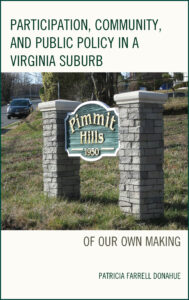 Participation, Community, and Public Policy in a Virginia Suburb challenges conventional wisdom about the nature of modern American communities. Through the story of Northern Virginia’s Pimmit Hills, she finds many more types of activities shape a community, than just those few typically tracked by social scientists, such as volunteering. Communities are the sum of a wide variety of participation—positive, negative, formal, informal, direct, and indirect. Pimmit Hills’s rich history will be familiar to those who grew up in middle-class suburbs, while its proximity to Washington, D.C. makes its story unique.
Participation, Community, and Public Policy in a Virginia Suburb challenges conventional wisdom about the nature of modern American communities. Through the story of Northern Virginia’s Pimmit Hills, she finds many more types of activities shape a community, than just those few typically tracked by social scientists, such as volunteering. Communities are the sum of a wide variety of participation—positive, negative, formal, informal, direct, and indirect. Pimmit Hills’s rich history will be familiar to those who grew up in middle-class suburbs, while its proximity to Washington, D.C. makes its story unique. Patricia Farrell Donahue received her M.A. in public policy from Georgetown University and Ph.D. in public policy from George Mason University. She is the 2014 Recipient of Mason’s Robert L. Fisher Award for Best Dissertation and Academic Achievement. She works as a senior policy analyst in the federal government, studying community and economic development, health, banking, defense, housing and other topics. She also serves as a Policy Fellow at Mason’s Schar School of Policy and Government.
Patricia Farrell Donahue received her M.A. in public policy from Georgetown University and Ph.D. in public policy from George Mason University. She is the 2014 Recipient of Mason’s Robert L. Fisher Award for Best Dissertation and Academic Achievement. She works as a senior policy analyst in the federal government, studying community and economic development, health, banking, defense, housing and other topics. She also serves as a Policy Fellow at Mason’s Schar School of Policy and Government.
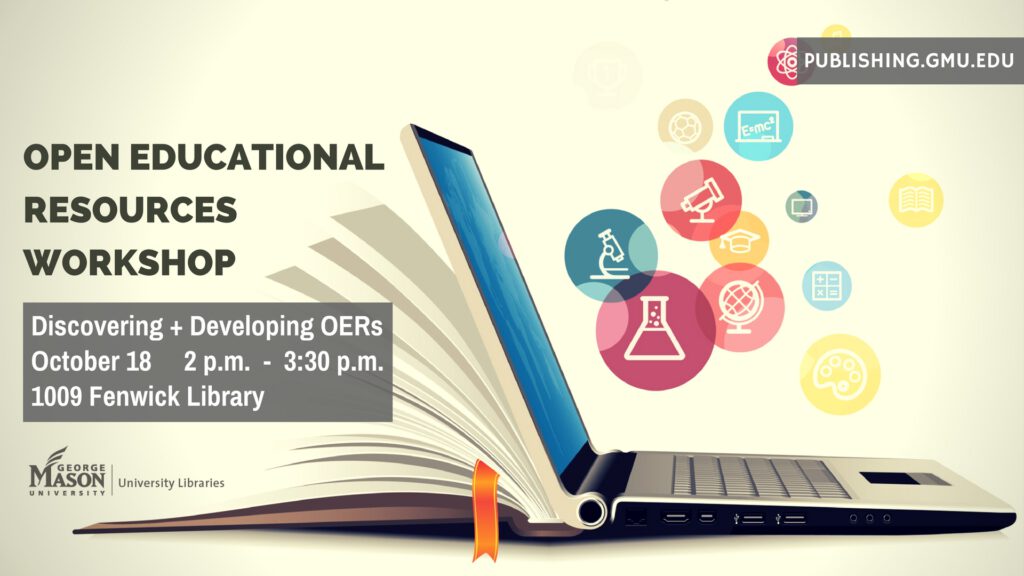


 One of the questions I frequently field, professionally speaking, is: “You’re starting a new university press? I thought many presses are closing.”
One of the questions I frequently field, professionally speaking, is: “You’re starting a new university press? I thought many presses are closing.” Curriki is a nonprofit global community that offers free K-12 learning resources for teachers, students, and parents. The resources on Curriki cover a wide range of subjects in the arts and sciences. Curriki offers over 55,000 Open Educational Resources and its 400,000 members represent nearly 200 countries.
Curriki is a nonprofit global community that offers free K-12 learning resources for teachers, students, and parents. The resources on Curriki cover a wide range of subjects in the arts and sciences. Curriki offers over 55,000 Open Educational Resources and its 400,000 members represent nearly 200 countries. Not-for-profit Khan Academy is an organization dedicated to providing a “free world-class education for anyone anywhere.” Content includes interactive challenges, assessments, and video in an array of topics for kindergartners through adult learners. Create an account to practice standardized tests and keep statistics on assignments and coursework you’ve completed, noting your progress as you learn.
Not-for-profit Khan Academy is an organization dedicated to providing a “free world-class education for anyone anywhere.” Content includes interactive challenges, assessments, and video in an array of topics for kindergartners through adult learners. Create an account to practice standardized tests and keep statistics on assignments and coursework you’ve completed, noting your progress as you learn.